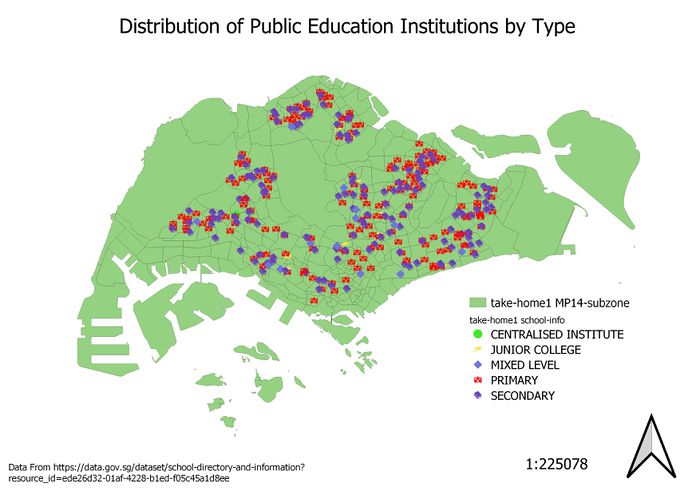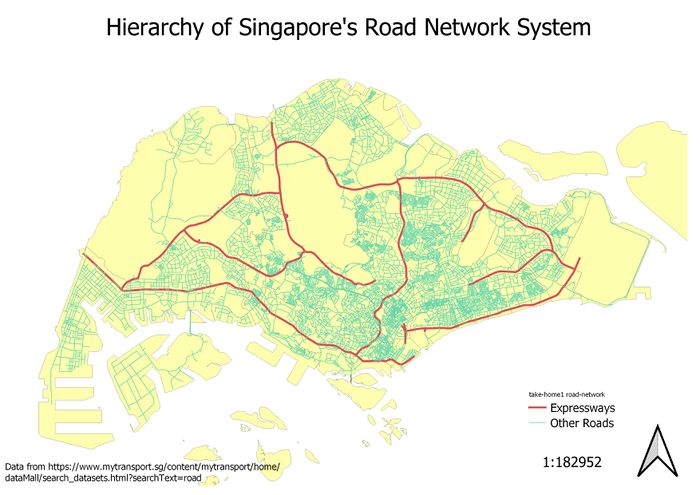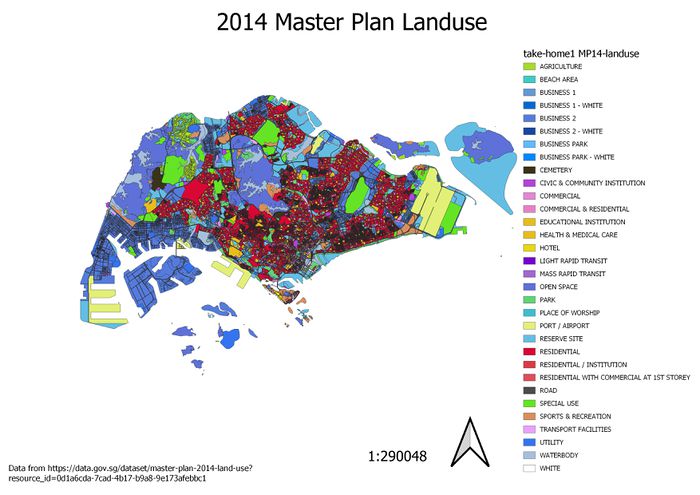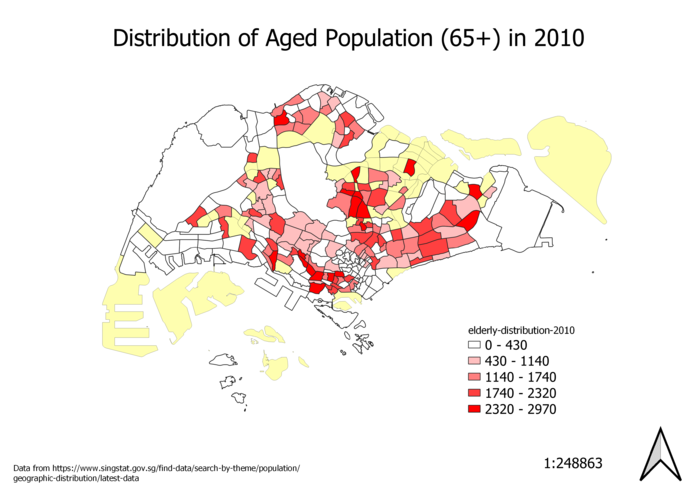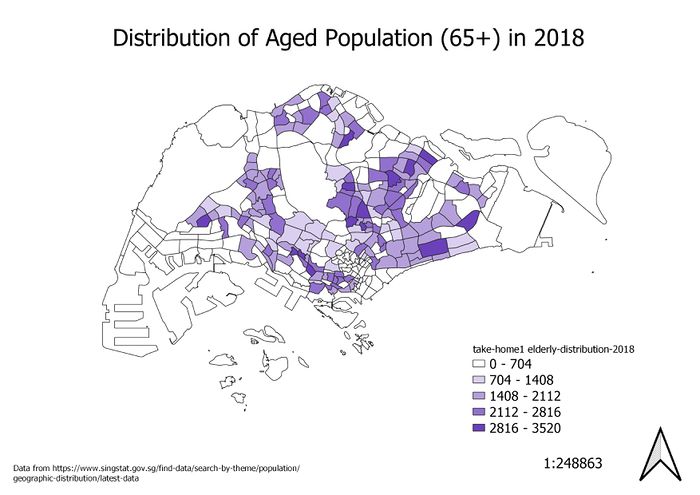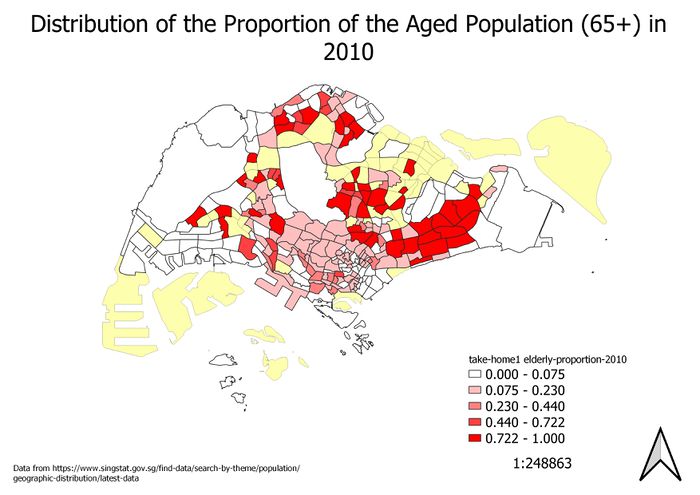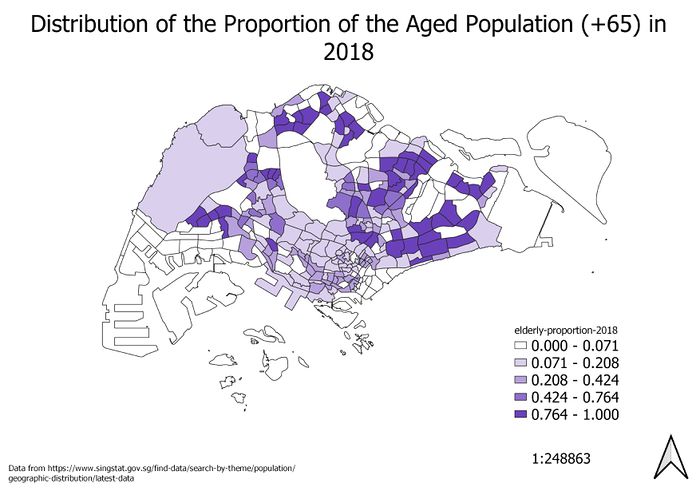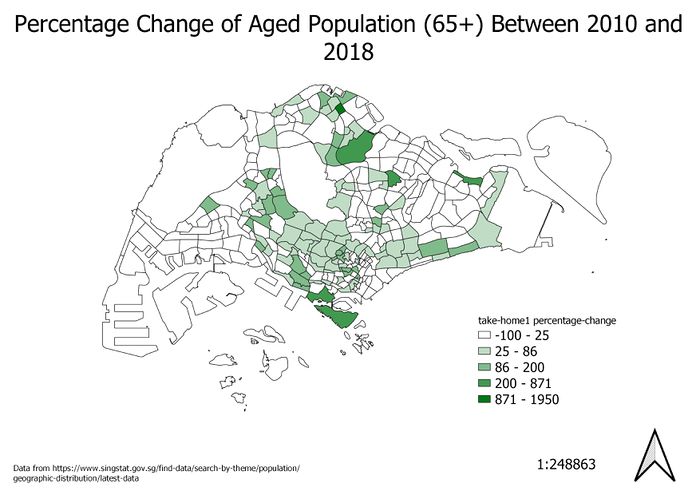SMT201 AY2019-20T1 EX1 Kong Yi Ru Kaelyn
Contents
- 1 Part 1: Thematic Mapping
- 1.1 Using school information from data.gov.sg, prepare a thematic map showing the distribution of public education institution by school types such as primary, secondary, etc.
- 1.2 Using road GIS data of LTA, prepare a thematic map showing the hierarchy of road network system of Singapore such as expressway, major road, minor road, etc.
- 1.3 Using road GIS data of LTA, prepare a thematic map showing the hierarchy of road network system of Singapore such as expressway, major road, minor road, etc.
- 1.4 Using master plan landuse GIS data from data.gov.sg, prepare a thematic map showing 2014 Master Plan Landuse.
- 2 Part 2: Choropleth Mapping
Part 1: Thematic Mapping
Using school information from data.gov.sg, prepare a thematic map showing the distribution of public education institution by school types such as primary, secondary, etc.
To show the distribution of public education institutions, I firstly classified the schools into the different Public Institution Types, namely “Primary School”, “Secondary School”, “Junior College”, “Mixed Level” and “Centralised Institute”. Different categorical markers and symbols were used to differentiate between the different school types, namely primary, secondary, mixed level and junior college. One marker was used for each type, for better visual representation of the distribution.
Using road GIS data of LTA, prepare a thematic map showing the hierarchy of road network system of Singapore such as expressway, major road, minor road, etc.
Using road GIS data of LTA, prepare a thematic map showing the hierarchy of road network system of Singapore such as expressway, major road, minor road, etc.
To show the Road Network System in Singapore, I first classified the roads into 2 types, “Expressways”, and “Other Roads”. Currently, there are 10 expressways in Singapore, and the 11th; the North-South Corridor will be completed in 2026. All 10 expressways are shown in thicker, red lines, while the other roads are in thinner, green lines. This helped to easily differentiate between the different types of roads, realistically depicting the sizes of roads.
Using master plan landuse GIS data from data.gov.sg, prepare a thematic map showing 2014 Master Plan Landuse.
To show the different land uses in the 2014 Master Plan, I first classified the land according to LU_DESC, the different uses, such as Agriculture, or Business. However, there were many categories, and the map ended up very messy, and difficult to read. To solve this, I changed some of the colours to suit their uses, such as “White” to white, “Waterbody” to blue, and “Park” to green. Also, for areas that had similar uses, or were used for similar industries, I changed the colours, so that they were similar to each other. For example, land used for businesses, (Business 1, Business 1- White, Business 2, etc.) are in different shades of blue, and residential areas (residential, residential with commercial at first story, residential/institution) in red.
Part 2: Choropleth Mapping
Aged population (+65) in 2010
In general, the areas with the greatest number of elderly people include areas in the central, south and east regions. However, many of the areas with fewer elderly people are not residential areas, referring to the Landuse map from Part 1.
Aged population (+65) in 2018
The size of the aged population increased from 2010 to 2018, as seen by the overall increase in the number of elderly people. The number of people increased in most subzones in every region where residential areas were present.
Proportional of aged population in 2010
The closer the proportion is to 1, it shows that there are far more elderly people residing in a subzone as compared to the number of non-elderly people. As shown, although there were high numbers of elderly people in the central, south and east regions, the highest proportion of elderly people generally reside in the East and Central of Singapore. Despite not having the highest numbers of elderly people, the North region also has some subzones with high proportions of elderly.
Proportional of aged population in 2018
There was also an increase in the number of subzones with higher proportions of elderly people from 2010 to 2018. However, the overall distribution of the proportion of elderly did not change drastically since 2010.
Percentage change of aged population between 2010 and 2018
In areas where the number and population of elderly people was high, the percentage change of elderly people was slight, or did not change from 2010 to 2018. However, on the whole, the percentage of elderly people in Singapore increased.
Discussion for Part 2
Using the data found on singstat.gov.sg, I first exported the 2010 and 2018 excel sheets into a comma-separated values (CSV) file, and imported them into QGIS, and converted the non-integer columns into integers such that I can perform mathematical functions on them later. To ensure that I am able to join the MP14-Subzone file with the CSV files, I created an additional column using the field calculator, to show the subzones in upper case. I created a column, “elderly”, by using the field calculator function. Below is the expression used to carry this out.
"65 to 69" + "70 to 74" + "75 to 79" + "80 to 84" + "> 85"
When the MP14-Subzone data was joined to the 2010 residential data, some values were null for the number of people in each subzone, indicating that there was missing data in the dataset. To show the regions where there was missing value, the MP14-Subzone layer can be seen, in a different colour, to show which subzones were missing data.
To come up with the proportion of aged population in 2010 and 2018, I created a new field, “elderly-proportion”, and summed up all the columns to give the total population in each subzone. However, there were some null values, as 0/0 cannot be computed, so when preparing to create the map about the proportion of aged population in 2010 and 2018, I created a new field, “elderly-proportion-updated”, where I added in an “if-else” statement, shown below. CASE WHEN “elderly-proportion” IS NULL,0,”elderly-proportion” This would more accurately indicate the proportion of aged population in each subzone.
For the last question, I joined the MP14-Subzone layer to the residential data of both 2010 and 2018, and created a new field once more, “percentage-change”. I took the aged population of 2018, minus the aged population of 2010, divided by the aged population of 2010, and then multiplied this value by 100 to get the final percentage.
